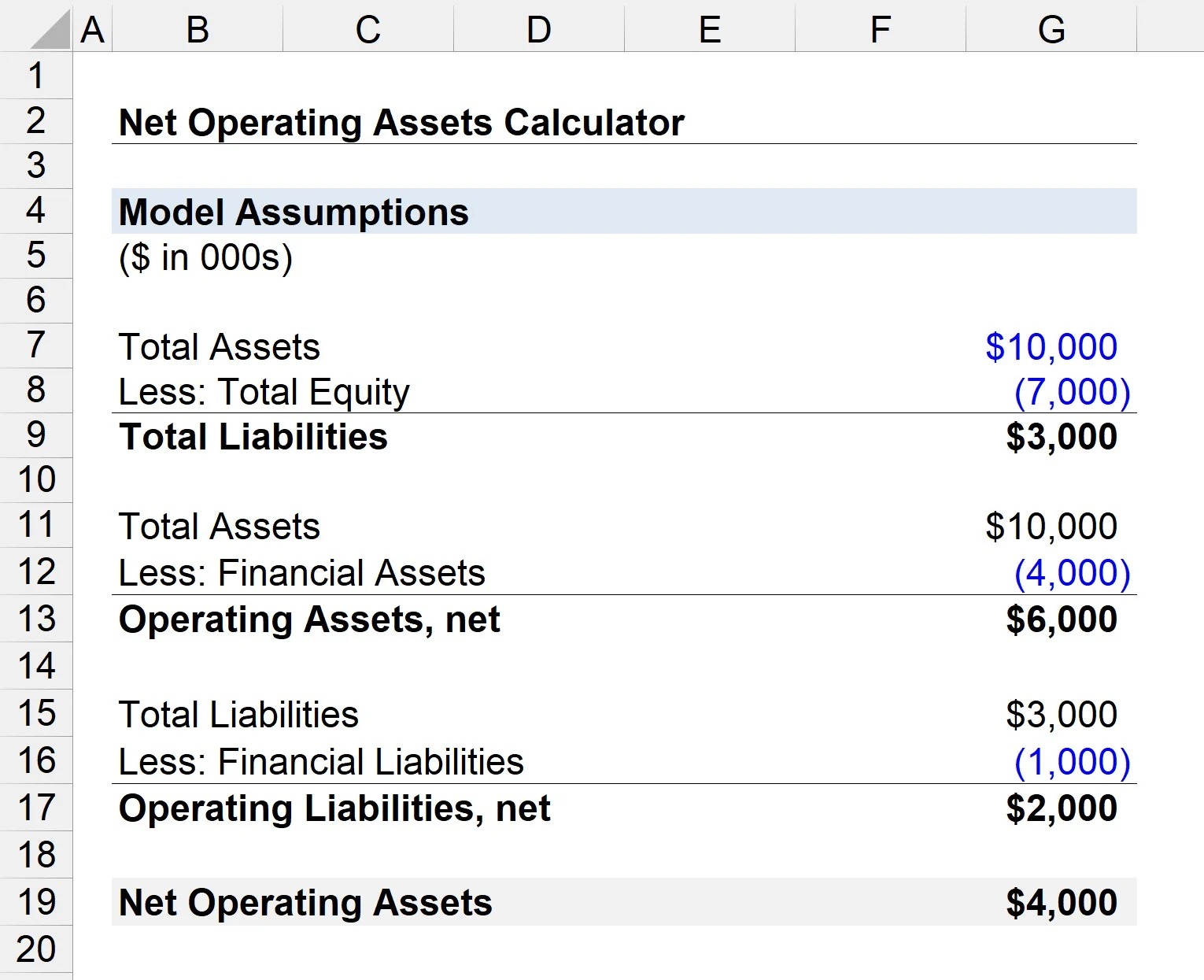

Finance
What Is A Good Expense Ratio For A 401K
Published: October 17, 2023
Looking for financial guidance? Learn all about expense ratios for 401K plans and find out what is considered a good expense ratio in finance.
(Many of the links in this article redirect to a specific reviewed product. Your purchase of these products through affiliate links helps to generate commission for LiveWell, at no extra cost. Learn more)
Table of Contents
Introduction
Welcome to the world of finance! In this article, we will explore the concept of expense ratios and their significance in the realm of 401(k) plans. Whether you are an experienced investor or a beginner looking to secure your financial future, understanding expense ratios is crucial.
Expense ratios play a vital role in determining the cost of investing in a mutual fund, index fund, or exchange-traded fund (ETF). In the context of retirement savings, such as 401(k) plans, finding a good expense ratio is essential as it directly affects the growth of your investments over time.
401(k) plans, a type of employer-sponsored retirement account, provide individuals with the opportunity to save for retirement in a tax-advantaged manner. These plans often offer a range of investment options, giving participants the flexibility to customize their portfolios based on their risk tolerance and investment objectives.
However, it’s important to be aware that managing a 401(k) involves costs. These costs, commonly known as expense ratios, cover the administrative fees, investment management fees, and other expenses associated with operating the plan. The expense ratio is expressed as a percentage and is deducted from the plan’s assets on an annual basis.
Choosing the right expense ratio for your 401(k) can significantly impact the growth of your retirement savings. A high expense ratio can eat into your investment returns over time, potentially reducing the final amount you have available for retirement. On the other hand, a low expense ratio can help maximize your investment returns and allow your savings to grow faster.
While selecting a 401(k) plan, it’s vital to understand the factors that influence expense ratios, as well as what constitutes a good expense ratio. In this article, we will delve into these aspects, providing you with the knowledge necessary to make informed decisions about your retirement savings. So, let’s dive in and explore the world of 401(k) plan expenses and how they can affect your financial future.
What is an Expense Ratio?
An expense ratio is a metric used to measure the cost of investing in a mutual fund, index fund, or ETF. It represents the annual percentage of a fund’s assets that are used to cover the expenses associated with managing the fund. These expenses typically include administrative fees, investment advisory fees, custodial fees, and other operating costs.
The expense ratio is calculated by dividing the total operating expenses of the fund by its average net assets. For example, if a fund has $1 million in operating expenses and $100 million in average net assets, the expense ratio would be 1%. This means that 1% of the fund’s assets are used to cover its expenses.
Expense ratios are important to consider because they directly impact the investor’s overall return. A high expense ratio can eat into investment gains, potentially reducing the investor’s overall profit. On the other hand, a low expense ratio allows more of the fund’s returns to be retained by the investor.
Expense ratios can vary significantly depending on the type of fund and the investment strategy it follows. Actively managed funds, which have professional portfolio managers who actively select and manage the fund’s investments, tend to have higher expense ratios compared to passively managed funds, such as index funds or ETFs.
Passively managed funds aim to replicate the performance of a specific index, such as the S&P 500. As a result, these funds require less active management, resulting in lower fees and expense ratios. Index funds and ETFs have gained popularity in recent years due to their low costs and ability to provide broad market exposure.
Expense ratios are typically disclosed in a fund’s prospectus, which provides detailed information about the fund’s investment objective, strategy, and expenses. It’s essential for investors to carefully review the prospectus before investing in a fund to gain a clear understanding of the fees and expenses they will incur.
When comparing expense ratios, it’s important to consider the investment returns and services offered by a fund. A slightly higher expense ratio may be justified if the fund consistently delivers above-average returns or provides valuable services, such as comprehensive research or access to specialized investment strategies.
Now that we have a clear understanding of what an expense ratio is, let’s explore its significance in the context of 401(k) plans and how it can impact your retirement savings.
Understanding 401(k) Plans
A 401(k) plan, named after the section of the U.S. Internal Revenue Code that governs it, is an employer-sponsored retirement savings plan. It allows employees to contribute a portion of their pre-tax salary to a retirement account, with the contributions and any investment gains growing tax-deferred until withdrawal.
One of the primary advantages of a 401(k) plan is that contributions are typically made on a pre-tax basis. This means that the money contributed to the plan is deducted from the employee’s taxable income, reducing their current tax liability. Taxes are only paid when funds are withdrawn from the account during retirement.
Employers often offer a matching contribution as part of a 401(k) plan to incentivize employee participation. This means that for every dollar an employee contributes to the plan, the employer matches a certain percentage of that contribution. For example, if an employer offers a 50% match up to 6% of the employee’s salary, and the employee contributes 6% of their salary, the employer will contribute an additional 3% of the employee’s salary to the plan.
401(k) plans provide individuals with a range of investment options to choose from, such as mutual funds, index funds, and ETFs. The investment options may vary depending on the plan provider and the employer’s selection. Participants can often customize their investment portfolios based on their risk tolerance, investment goals, and time horizon.
Another key feature of a 401(k) plan is the ability to contribute up to a certain annual limit. As of 2021, the maximum employee contribution limit is $19,500, with an additional catch-up contribution of $6,500 for individuals aged 50 and older. These contribution limits are subject to adjustment by the IRS to account for inflation.
One of the main benefits of a 401(k) plan is the potential for tax-deferred growth. The contributions made to the plan, along with any investment gains, grow tax-free until funds are withdrawn during retirement. This allows individuals to accumulate a larger retirement nest egg over time.
It’s worth noting that early withdrawals from a 401(k) plan before reaching the age of 59½ may be subject to income taxes and early withdrawal penalties. However, some 401(k) plans offer provisions for loans or hardship withdrawals that allow individuals to access their funds under specific circumstances.
Now that we have a good understanding of 401(k) plans, let’s dive into why expense ratios are essential when evaluating these retirement accounts.
Importance of Expense Ratios in 401(k) Plans
The expense ratio of a mutual fund, index fund, or ETF within a 401(k) plan is a critical factor to consider when evaluating the overall performance and potential returns of the plan. The expense ratio directly impacts the growth of your investments over time and can significantly affect your retirement savings. Here are several reasons why expense ratios are important in 401(k) plans:
1. Cost of Investing: The expense ratio represents the cost of investing in a fund within the 401(k) plan. Over the long term, even seemingly small differences in expense ratios can significantly impact your investment returns. Choosing funds with lower expense ratios can help you minimize costs and maximize your overall returns.
2. Impact on Investment Returns: Higher expense ratios eat into the investment returns of the funds in your 401(k) plan. The percentage of your fund’s assets used to cover expenses is deducted annually, reducing the overall gains. By selecting funds with lower expense ratios, more of the investment returns remain in your account, allowing your savings to grow faster.
3. Cumulative Effect Over Time: Expense ratios have a compounding effect on your retirement savings. As your investments grow and compound over time, the impact of expense ratios becomes more significant. By minimizing expenses through lower expense ratios, you can potentially accumulate a larger retirement nest egg.
4. Long-Term Performance: Studies have shown that funds with lower expense ratios tend to outperform funds with higher expense ratios over the long term. While past performance is not indicative of future results, selecting funds with lower expense ratios can increase the likelihood of achieving better investment performance and reaching your retirement goals.
5. Diversification Opportunities: Lower expense ratios can provide you with more opportunities to diversify your investments within your 401(k) plan. By minimizing costs associated with investment options, you can allocate your funds to a broader range of asset classes or investment strategies, helping to reduce risk and enhance potential returns.
6. Return on Investment: Expense ratios can significantly impact your return on investment (ROI) within a 401(k) plan. A higher ROI allows your account to grow faster, potentially providing you with more financial security and flexibility in retirement. By paying attention to expense ratios, you can optimize your ROI and make the most of your retirement savings.
As you can see, expense ratios play a vital role in the performance and growth of your 401(k) plan. By selecting funds with lower expense ratios, you can potentially increase your investment returns, reduce costs, and maximize the accumulation of your retirement savings over time.
Next, let’s explore the factors you should consider when evaluating expense ratios within your 401(k) plan.
Factors to Consider When Evaluating Expense Ratios
When evaluating expense ratios within your 401(k) plan, it’s important to consider several factors to make informed investment decisions. These factors can help you assess the overall value and potential impact of the expense ratios on your retirement savings. Here are the key factors to consider:
1. Fund Performance: While expense ratios are crucial, it’s equally important to evaluate the historical performance of the funds within your 401(k) plan. A fund with a slightly higher expense ratio may be justified if it consistently outperforms funds with lower expense ratios. Compare the performance of funds over multiple time periods to gain a better understanding of their potential for generating returns.
2. Investment Strategy: Consider the investment strategy of the funds within your 401(k) plan. Some strategies may require more active management or specialized expertise, resulting in higher expense ratios. Evaluate whether the investment strategy aligns with your risk tolerance, investment goals, and long-term expectations. Remember, a well-diversified portfolio may contain funds with various strategies and expense ratios.
3. Fund Type: Different types of funds within your 401(k) plan may have varying expense ratios. Actively managed funds tend to have higher expense ratios due to the costs associated with professional management and research, while passively managed index funds or ETFs typically have lower expense ratios. Evaluate the benefits and drawbacks of each fund type before making investment decisions.
4. Investment Options: Assess the overall range and quality of investment options within your 401(k) plan. Consider whether the plan offers a diverse selection of funds across different asset classes, such as domestic and international equities, fixed income, and alternative investments. An optimal investment lineup provides you with more opportunities to build a well-balanced and diversified portfolio while considering expense ratios.
5. Plan Provider Costs: In addition to the expense ratios of individual funds, consider the costs associated with the plan provider’s administrative services and any additional fees or charges. These costs can vary among employers and plan providers. It’s important to understand the total costs of participating in your 401(k) plan, including both expense ratios and administrative fees.
6. Fee Waivers or Discounts: Some funds or plan providers may offer fee waivers or discounts for certain investor groups or larger account balances. Explore whether any such benefits apply to your 401(k) plan. These waivers or discounts can help reduce expense ratios and potentially improve your investment outcomes.
7. Expense Ratio Trends: Consider the historical trend of expense ratios within the funds you are evaluating. Compare expense ratios over multiple years to determine if they have been stable or fluctuating. Be cautious of funds that have experienced a consistent increase in expense ratios, as this may indicate higher costs or other underlying factors that could impact your returns.
By carefully evaluating these factors, you can gain a comprehensive understanding of the expense ratios within your 401(k) plan. Remember to keep your financial goals, risk tolerance, and investment preferences in mind while considering these factors.
Next, let’s explore the average expense ratios typically found in 401(k) plans to provide you with a benchmark for comparison.
Average Expense Ratios for 401(k) Plans
When evaluating the expense ratios within your 401(k) plan, it can be helpful to have a benchmark to compare against. While expense ratios can vary across different plans and investment options, understanding average expense ratios can provide you with a reference point. Here are some average expense ratios for 401(k) plans:
1. Large-Cap Equity Funds: Large-cap equity funds often serve as core holdings in many 401(k) plans. The average expense ratio for these funds typically ranges from 0.10% to 1.00%, with actively managed funds tending to have higher expense ratios compared to passively managed index funds.
2. Small-Cap and Mid-Cap Equity Funds: Small-cap and mid-cap equity funds, which invest in smaller and medium-sized companies, generally have slightly higher expense ratios than large-cap funds. The average expense ratio for these funds can range from 0.30% to 1.50%, depending on the level of active management involved.
3. International Equity Funds: International equity funds, which provide exposure to companies outside the United States, often have expense ratios similar to those of large-cap equity funds. The average expense ratio for international equity funds can range from 0.10% to 1.20%.
4. Bond Funds: Bond funds, which invest in fixed-income securities, tend to have lower expense ratios compared to equity funds. The average expense ratio for bond funds within 401(k) plans can range from 0.10% to 0.80%. However, actively managed bond funds may have slightly higher expense ratios, depending on the complexity of the fixed-income investments.
5. Target-Date or Lifecycle Funds: Target-date or lifecycle funds are designed to adjust the asset allocation over time based on the investor’s expected retirement date. These funds typically have a blend of stocks, bonds, and other assets. The average expense ratio for target-date funds can range from 0.50% to 1.00%, depending on the level of diversification and active management.
It’s important to note that these are general ranges and that expense ratios can vary significantly across different 401(k) plans and investment options. Some plans with a large number of participants may offer lower-cost investment options due to economies of scale, while others may have higher expense ratios due to specific fund selections or administrative fees.
When evaluating the expense ratios within your 401(k) plan, compare them to these average ranges as a starting point. Additionally, consider the factors mentioned earlier, such as fund performance, investment strategy, and plan provider costs, to make a well-rounded assessment of the expense ratios and their potential impact on your retirement savings.
Now that we have explored average expense ratios, let’s discuss what constitutes a good expense ratio for a 401(k) plan.
What is a Good Expense Ratio for a 401(k)?
When it comes to determining what constitutes a good expense ratio for a 401(k) plan, it’s essential to strike a balance between cost-effectiveness and investment quality. While the ideal expense ratio may vary depending on individual circumstances, there are some general guidelines to consider:
1. Low-Cost Options: A good expense ratio for a 401(k) plan is generally considered to be below 1%. Funds with expense ratios in this range are often considered cost-effective and can help maximize your investment returns. However, even lower expense ratios, such as 0.5% or lower, can be advantageous as they allow more of your money to be invested and have the potential to compound over time.
2. Industry Standards: It’s helpful to compare the expense ratios of the funds within your 401(k) plan to the industry standards for similar investment options. While there may be some variation, aiming to have expense ratios in line with or below the industry averages can be a good benchmark to consider.
3. Balanced Investment Mix: A good expense ratio also depends on the overall investment mix within your 401(k) plan. If your plan offers a diversified range of funds across different asset classes, it can be acceptable to have slightly higher expense ratios for certain specialized or actively managed funds. The key is to ensure that your overall investment costs are reasonable while aligning with your investment strategy and risk tolerance.
4. Plan Services and Benefits: While expense ratios are important, it’s essential to consider the value and services provided by the plan. A plan that offers a robust lineup of quality investment options, access to professional advice, and comprehensive retirement planning tools may justify slightly higher expense ratios. Evaluate the overall benefits and services provided by the plan to determine if the expense ratios are reasonable given the additional value received.
5. Individual Investment Goals: Consider your individual investment goals and time horizon. If you have a long-term investment horizon, a slightly higher expense ratio may be tolerable if the fund has a track record of consistently strong performance. In contrast, if you are nearing retirement or have a conservative investment approach, lower expense ratios may be a more prudent choice.
Remember, the goal is to find a good balance between cost and investment quality while ensuring that your overall investment strategy aligns with your retirement goals. Consider consulting with a financial advisor or utilizing online resources to assess the expenses within your 401(k) plan and make informed decisions.
Now that we have explored what constitutes a good expense ratio, let’s explore strategies you can employ to minimize expense ratios within your 401(k) plan.
Investing Strategies to Minimize Expense Ratios
Minimizing expense ratios within your 401(k) plan can help you maximize your investment returns and potentially grow your retirement savings more effectively. Here are some strategies you can employ to minimize expense ratios:
1. Focus on Index Funds and ETFs: Index funds and exchange-traded funds (ETFs) are popular investment options known for their low expense ratios. These funds aim to replicate the performance of a specific market index, such as the S&P 500. By investing in index funds or ETFs, you can benefit from their low costs and passively managed nature, which can help minimize expense ratios within your 401(k) plan.
2. Consider Passively Managed Funds: Passively managed funds, including index funds and ETFs, typically have lower expense ratios compared to actively managed funds. Actively managed funds have higher costs associated with the research, analysis, and management conducted by the fund managers. By favoring passively managed options, you can reduce the expense ratios within your 401(k) plan.
3. Evaluate Target-Date Funds: Target-date funds are designed to automatically adjust the asset allocation based on a specific retirement target date. These funds often provide a diversified mix of investments within a single fund. When selecting target-date funds, compare their expense ratios, as they can vary among different fund providers. Look for options with competitive expense ratios while meeting your desired asset allocation and risk profile.
4. Compare Similar Funds: If your 401(k) plan offers multiple funds with similar investment objectives, compare their expense ratios. Choose funds with lower expense ratios while considering other factors such as historical performance, investment strategy, and the reputation of the fund provider. Be cautious not to solely focus on expense ratios, as other factors can impact the overall quality and performance of the funds.
5. Rebalance Regularly: Regularly reviewing and rebalancing your investment portfolio can help ensure it aligns with your desired asset allocation and risk tolerance. Rebalancing involves buying and selling assets to bring your portfolio back to its original target allocation. During this process, take the opportunity to reassess the expense ratios of your selected funds and consider lower-cost alternatives if available.
6. Seek Employer Negotiations: If you believe the expense ratios within your 401(k) plan are higher than necessary, consider discussing it with your employer or plan administrator. Employers have leverage to negotiate lower expense ratios based on the number of plan participants and assets. By bringing attention to the issue, you may encourage your employer to explore lower-cost options or negotiate better terms with the plan provider.
7. Stay Informed: Finally, stay informed about the funds within your 401(k) plan. Keep an eye on expense ratios, as they can change over time. Stay updated on new fund options or share class changes that may offer lower-cost alternatives. Regularly review your investment choices to ensure they continue to align with your investment goals and are cost-effective.
Remember that while minimizing expense ratios is important, it should not be the sole factor driving your investment decisions. Consider the overall quality, performance, and suitability of the investment options within your 401(k) plan while evaluating expense ratios.
By employing these strategies and being proactive in managing your 401(k) investments, you can minimize expense ratios and maximize your long-term investment returns within your retirement account.
Now, let’s conclude our exploration of expense ratios and their significance within 401(k) plans.
Conclusion
Understanding expense ratios and their impact on 401(k) plans is essential for maximizing your retirement savings. Expense ratios directly affect the cost of investing and can significantly impact the growth of your investments over time. By being mindful of expense ratios, you can make informed investment decisions that align with your financial goals.
When evaluating expense ratios within your 401(k) plan, aim for low-cost options that provide a good balance between cost-effectiveness and investment quality. Generally, expense ratios below 1% are considered favorable, but even lower ratios can offer additional benefits. Compare the expense ratios of different funds, considering factors such as historical performance, investment strategy, and plan services.
Minimizing expense ratios can be achieved by focusing on index funds and ETFs, considering passively managed options, evaluating target-date funds, regularly rebalancing your portfolio, and staying informed about fund options and alternatives. Additionally, employers can play a role in negotiating lower expense ratios on behalf of their employees.
While expense ratios are important, it’s crucial to not overlook other factors such as fund performance, investment strategies, and plan provider costs. Balancing these factors will help you build a well-diversified portfolio that aligns with your risk tolerance, investment goals, and retirement timeline.
Remember to continuously review and reassess your investments within your 401(k) plan. Regularly monitor expense ratios and consider making adjustments as needed to ensure you are getting the most value from your retirement savings. Make use of resources like financial advisors, online tools, and your plan provider’s resources to help guide your decision-making process.
By understanding and actively managing expense ratios within your 401(k) plan, you can optimize your investment returns and work towards achieving your long-term financial goals. With careful consideration and informed choices, you can secure a brighter financial future for your retirement.














